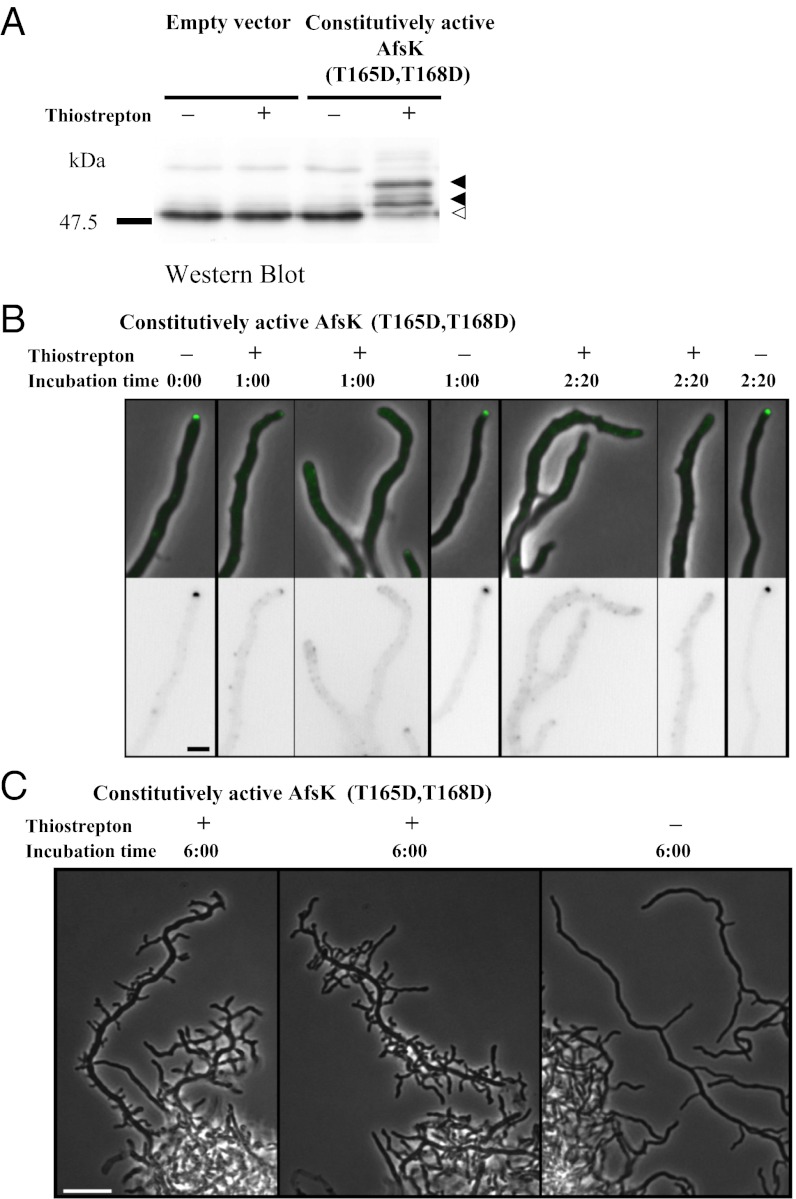Fig. 7.
Engineered expression of a constitutively active version of the AfsK kinase induces high levels of DivIVA phosphorylation and profoundly affects hyphal tip extension and branching. (A) Levels of DivIVA phosphorylation induced by expression of the afsK(T165D, T168D) allele from the thiostrepton-inducible tipAp promoter in plasmid pKF275. A strain carrying empty vector pIJ6902 was used as control. Growing cultures were split in two, and thiostrepton was added to one (+) whereas a mock addition of DMSO was made to the other (−). Extracts of cells harvested after 2.5 h were separated by SDS/PAGE, and DivIVA was detected by immunoblotting. Phosphorylated species of DivIVA (closed arrowheads) migrate more slowly than unphosphorylated DivIVA (open arrowhead). (B) The effects of overproduction of constitutively active AfsK(T165D, T168D) on DivIVA-EGFP localization are illustrated by typical examples of hyphae from strain K338. Images captured before addition of thiostrepton (10 μg/mL), the inducer of tipAp-afsK(T165D, T168D) expression, 1 h and 2 h 20 min after addition of thiostrepton or mock. EGFP fluorescence is shown in inverted grayscale (Lower) or shown in green overlaid on phase-contrast images (Upper). (Scale bar, 2 μm.) (C) Typical examples of hyperbranched hyphal morphology developing after overexpression of afsK(T165D, T168D) for 6 h (Left) compared with the uninduced control sample (Right). (Scale bar, 10 μm.)

